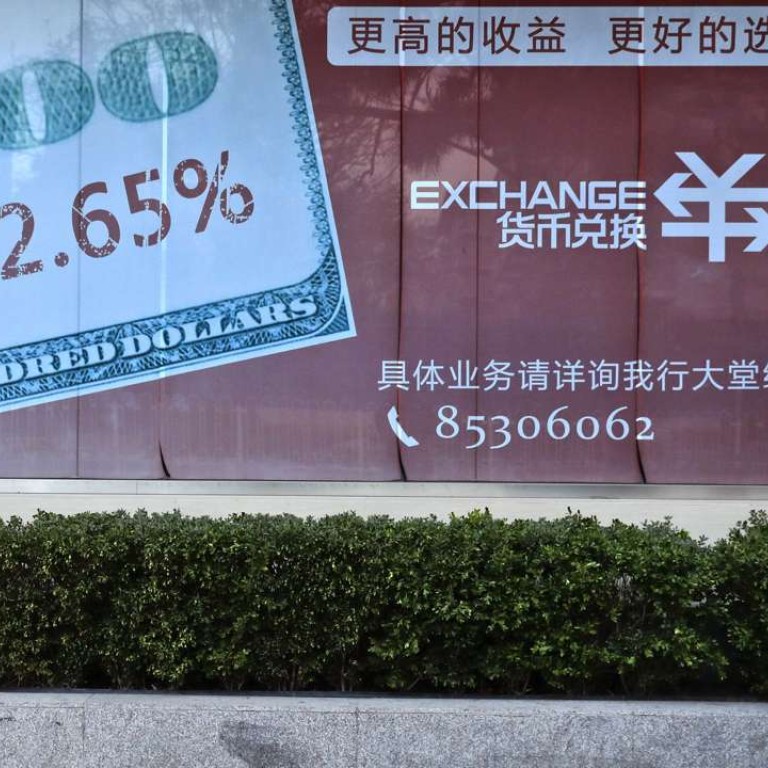
Hong Kong-China cross-border fund sales scheme struggles to attract investors
Mainland investors channel 10.6 billion yuan into Hong Kong funds, exceeding northbound investment flows by 64 times
Waning investor interest for mainland China stocks and a glacially slow fund approval process are factors for a disappointing uptake in the cross-border mutual fund recognition scheme, according to industry players.
The scheme which debuted in Hong Kong in July 2015 featured a combined two-way investment quota of 600 billion yuan (US$87.12 billion), or 300 billion yuan of cross-border flows in each direction. At the time of launch, the scheme was touted to eventually support 100 Hong Kong-domiciled funds and 850 mainland Chinese funds.
However, so far, only six Hong Kong funds have been approved by the China Securities Regulatory Commission to be sold in the mainland, while Hong Kong regulators have approved 49 mainland funds.
Mainlanders outweighed foreign investors by a factor of 64 times, as the mainland funds attracted 164.9 million yuan of funds from Hong Kong
“The tight regulatory approval is a major obstacle as the CSRC has not approved many Hong Kong funds to be sold in the mainland. It would be hard to see a very active cross border fund sales scheme with so few funds available in the mainland,” said Joseph Tong Tang, chairman of Morton Securities.
In terms of sales, mainlanders channelled 10.6 billion yuan into Hong Kong funds during January 2016 to February 2017, according to figures released by the State Administration of Foreign Exchange.
In spite of the fewer funds available, mainlanders outweighed foreign investors by a factor of 64 times, as the mainland funds attracted 164.9 million yuan of funds from Hong Kong.
Analysts said mainland investors appear to be bypassing the fund scheme in favour of the stock connect schemes which link Hong Kong to the Shenzhen and Shanghai stock markets, allowing investors direct access to stocks on each side of the border subject to quotas.
The 10.6 billion yuan invested by mainlanders into the six Hong Kong funds is equivalent to 1.5 days of average daily turnover for mainland buyers via the Shanghai and Shenzhen stock connect.
“It is natural to see more mainlanders using the stock connect to buy Hong Kong stocks rather than fund products. There are a lot of stocks choices for investors while stockbrokers would give them stock selection advise. They are not that familiar with fund products,” said Christopher Cheung Wah-fung, a broker and Hong Kong legislator.
The average daily turnover of northbound trading via the stock connect stood at 6.8 billion yuan, or equivalent to 41 times of the total amount invested via mainland funds in Hong Kong over the past 14 months.
Tong said the stock connect schemes were attractive because they enable investors to tap into hundreds of stocks eligible stocks listed on the three bourses.
In comparison, some Hong Kong funds have been waiting for more than a year to receive approval from the CSRC to join the mutual recognition scheme.
“If the regulators continue to keep such tight grip, I do not see any improvement in the cross border fund trading scheme,” Tong said.
Hong Kong fund managers called for changes in the approval process.
“We believe that to be able to fully cater for the needs of mainland investors, there needs to be a wholesale review of the approval mechanism of the mutual recognition fund scheme,” said Sally Wong, chief executive of Hong Kong Investment Funds Association.
Wong criticised the approval process as being too slow. She also highlighted excessive compliance issues, such as a requirement that a fund’s management team be housed in Hong Kong, in addition to
regulations that stipulate no more than 50 per cent of a Hong Kong fund could be sold in the mainland.
“We would call for a framework that can facilitate more managers to participate and more products to be offered. Different mainland investors have different risk and return needs and only if we can offer a wide array of products can this channel become meaningful to mainland investors,” Wong said.

